Kathleen deLaski on Who Needs College Anymore?
Key Points
-
The current educational landscape is shifting away from the traditional four-year degree, emphasizing alternative pathways like apprenticeships and dual enrollment.
-
The future of education requires a more flexible, step-ladder approach where learning is ongoing and adaptable to individual career goals and life circumstances.
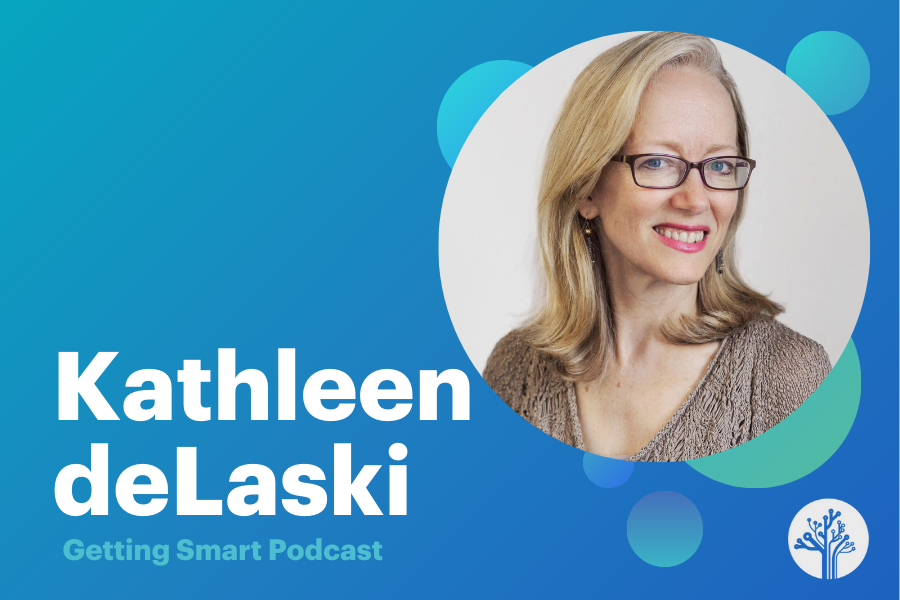
In this episode of the Getting Smart Podcast, Tom Vander Ark is joined by Kathleen deLaski, author of “Who Needs College Anymore?” to explore the ever-evolving landscape of higher education. DeLaski challenges traditional views on college education, delving into how the rise of alternative pathways like apprenticeships and dual enrollment are reshaping post-secondary education. They discuss what kind of student still benefit from college, the impact of AI on apprenticeships, and the role of experience as the new “silver bullet” in career advancement. Tune in to discover why the four-year degree might not be the only or best option for today’s learners and how these changes are influencing the future of work and education.
Outline
- (00:00) Introduction: Who Needs College Anymore?
- (02:34) The Changing Perception of Higher Education
- (04:27) The Great Recession’s Impact on College Value
- (07:21) Is College for All Dead?
- (09:25) Who Needs College? Exploring Different Personas
- (14:17) The Rise and Fall of Bootcamps and MOOCs
- (20:45) The Future of Apprenticeships
- (24:03) The Step Ladder Approach to Higher Education
- (28:43) AI and the Future of Higher Education
Introduction: Who Needs College Anymore?
Tom Vander Ark: Who needs college anymore? It’s the question asked by Kathleen deLaski in a great new book. America really, I think, called BS on higher education around 2018. By 2023, as Kathleen points out in the beginning of her book, a clear majority of Americans did not believe that college was worth the cost.
I’m Tom Vander Ark, and you’re listening to the Getting Smart Podcast. We are honored to have Kathleen deLaski with us today to talk about her new book Who Needs College Anymore? Kathleen, it’s great to see you.
Kathleen deLaski: Well, thank you for having me, Tom.
Tom Vander Ark: It was a real delight to read your book, Kathleen. As I mentioned before, I had forgotten that you were a journalist, and I remembered it as soon as I read the introduction and thought to myself, man, she can write.
Kathleen deLaski: Thank you for that. That’s very kind. Journalism is something that I kind of put in my past when I went into education reform, because journalists are not necessarily as well-received in that field. But I wanted to come back to it in the twilight of my career.
Tom Vander Ark: You started the Education Design Lab, was that about 2013?
Kathleen deLaski: Yes, exactly. Mm-hmm.
Tom Vander Ark: And I promise we’ll come back to the book because we do want to talk about college. But what was the intent when you launched Ed Design Lab?
Kathleen deLaski: Well, I’d spent maybe 10 years in mostly the charter school reform and education reform field and had then also been at Sallie Mae as an executive, really working on the business model for the part of the US population that couldn’t afford college. So I got to know a lot of families. I ran the foundation for Sallie Mae, for example. And then I was also on the board of a large public university here in Virginia, George Mason University. So I really saw, I mean, there were a lot of support groups in K-12 and really not very many intermediaries or support groups helping insiders do the reform in higher ed. It was a time in 2013, if you remember, it was the beginning of MOOCs, remember, and bootcamps and tons of private capital flowing into education.
The Changing Perception of Higher Education
Kathleen deLaski: So we all thought that colleges were in trouble. They were going to be disintermediated and unbundled to smaller bits. And so I really started the lab as a nonprofit to help colleges do that work themselves, right? Let’s do it in the way that is student-centered and works for colleges and can help them survive into the new century.
Tom Vander Ark: It’s possible that we met at George Mason at a Mercatus event. I was a big fan of Tyler Cowen and the whole Mercatus crew. That’s at least one of our potential connections. So, we’ll come back and talk about the Ed Design Lab because I know that you’ve now graduated from being CEO to being the board chair. But the Design Lab is, in our view, really the leading thought partner around credentialing and signaling systems. And I think like you, we have some hope that that will help drive the future of a more flexible, more responsive postsecondary landscape. Well, it’s nice to see you going back to journalism because this book is really a beautiful bit of writing. It’s really well-researched as well as being well-written. And I love how you’re leading with a set of questions. You have a provocative one in the title. Who needs college anymore? At the outset, I said that America had really lost faith with higher ed. I got the sense starting around 2018, but I’m probably wrong. What do you think? Was the rise of the MOOCs in 2012 an earlier signal of disenchantment with the historical model?
The Great Recession’s Impact on College Value
Kathleen deLaski: Well, I think what really kicked it off was the recession, the Great Recession a couple of years earlier where, you know, because the heyday of college enrollment was around 2010. And it’s been falling off since then, by about 15% until 2022. It’s starting to recover a little bit now, but the fastest-growing areas are not degrees. So, we can talk about that in a minute. But, to answer your question, the Great Recession really took the shine off for a lot of students who were coming out with a fair amount of debt and then couldn’t get jobs. And then they’re telling their younger brothers and sisters and their family and friends, “I’m in debt and my degree is not helping me get hired.” I had a daughter that entered into that job market, so we were living it at my house.
Tom Vander Ark: I have a daughter that graduated in 2010 and became one of the founding staff members at Getting Smart.
Kathleen deLaski: Oh yes, I think I’ve met her.
Tom Vander Ark: Yes, because it was a tough job market. And so maybe that’s the place where the lines first crossed, where a lot of people began to question the value, question the ROI, because we had seen, by that point, at least 15 years of significant, often double-digit inflation. And that shock to the hiring system was probably the big problem recognition. I want to go back to 2000, maybe even the late ’90s. We were just forming the Gates Foundation in 1999, and I was selling an agenda of all kids being college-ready.
Kathleen deLaski: Absolutely.
Tom Vander Ark: It was a provocative supposition that every student in America should at least be college-ready and have access to college given their interest and aptitude. Bill and Melinda and our whole agenda at the Gates Foundation really focused on that idea of all students being college-ready, and it was quickly adopted. You mentioned earlier that charter management organizations really turned that into a college-for-all movement. The college-for-all movement was really pioneered by the no-excuses networks. And that became a strong movement through the ’00s. So is it fair to say that by the Great Recession, there was a pretty strong K-12 emphasis on college-for-all?
Kathleen deLaski: Absolutely.
Is College for All Dead?
Kathleen deLaski: And I do a whole chapter in the book called “Is College for All Dead?” that asks the question now that we’re post-pandemic and we’re in an era of AI and just-in-time learning. Is the college-for-all mantra that many high schools are still trying to project or, you know, that’s the narrative that they have, is that working anymore? And I profile some charter high schools specifically because they’re very forthcoming with data and they’re willing to talk. I would have liked to have had the story at more schools. I profile them, and they describe how after the pandemic, even 10 to 15% fewer of their college-prepared students were choosing that path. They felt like they were really letting them down because they didn’t have other options for them besides trade school, and yet they knew there were other options in this fast-changing skills-based world. They wanted help and resources to figure out how to change the messaging for what one school, DSST in Colorado, described as professional pathways. They actually came up with that term to describe the non-degree pathway that should be just as prestigious and could potentially lead to a family-sustaining wage and upward mobility, but they needed to reframe it.
Tom Vander Ark: So the answer to “Is College for All Dead?” is, I think, a resounding yes. It’s surprising how quickly America’s view of higher ed changed. The stat that you opened with, that Wall Street Journal poll, that 56% of Americans said they didn’t believe college was worth their cost anymore, flipped relatively quickly. So how do you answer the question now? Who needs college anyway? Let’s unpack that.
Who Needs College? Exploring Different Personas
Kathleen deLaski: Yeah, and I want to really emphasize the title of the book is framed carefully. And, you know, you wish you could have like an audio button that you push because where you put the emphasis on the title kind of labels you as how you feel about the answer, right? You could say, “Who needs college anymore?” Or “Who needs college anymore?” Right? Right. And they have very different meanings. And I’m really putting my emphasis on the ‘who’ and, you know, the Education Design Lab was founded using the methodology of design thinking where you actually look at the users and what are their needs, what are their unmet needs, what are the barriers for them? I take a whole chapter to create what I call personas, but they’re basically archetypes of the different types of people who could afford to skip college and those who at this point really need it to respond to their family goals, their parents’ expectations, etc. And so, you know, I won’t go through the whole list because it’s probably too long for a podcast here, but just to give you a flavor of who could afford to give it a miss in this day and age, I include people who are older and are not in that coming-of-age, adulting period of their life. If they’re choosing a profession, if they think they want a profession that’s not like doctor, lawyer, nurse, teacher, one that requires a degree to get to a license, they should look at other options first. I have a daughter in this category who I feature in the book who was looking to career change at around 26. She wasn’t going to go back for that four-year experience that she never had. Every kid in her high school went to college except her, and she took a different path. So, I pushed her to do bootcamps, which she did and parlayed herself into another field. So that would be what I call the connected career switcher. Someone who maybe has some contacts, has access to funds, or family wealth that can look at other options for shortcuts. That’s one category. Others would be folks who are doing apprenticeships or could do apprenticeships, which is why we need more of them because they are kind of prepackaged career paths. I describe those people who could be any age. Another category is people who maybe don’t know what they want to do yet, and research shows that if you are restricted in funds and you don’t know what you want to do, it may not end well for you. Because it is really hard for someone who is undecided to get through community college and then do the transfer. There are many things standing in the way if you don’t have funds. So I basically say that if you don’t have access to a bankroll, if you have time and can get, let’s say, a Pell Grant, you should definitely give it a try and test it out. Use it for career exposure if nothing else. But if you have DIY skills, I profile people who hack their way using Reddit for their career advice and YouTube for their skill building. They’re hacking their way to sufficiency, in some cases six-figure salaries. So those are the people who could afford not to do it. I won’t go through the list on the other side of people who do need it, but it basically comes down to either immigrant families who came to this country for their kids to learn how to be an economic climber. College is very useful for that. If you can figure out a way to do it, you should do it. The statistics actually show that that group of people, plus generally low-income people of color, are finding that they still need to go to college for that legitimacy label, for the social network power, more than what they’re specifically going to learn in the class. That’s kind of how it stacks up. Interestingly, this past fall, the latest numbers show there is a little bit of a recovery of people, particularly for certificates and for dual enrollment, which we could talk about, but where the numbers of people who are in the white demographic, the people who are choosing not to go to college, tend to be wealthier whites, which is I think really interesting and could be unpacked further.
The Rise and Fall of Bootcamps and MOOCs
Tom Vander Ark: Kathleen, you mentioned some of the bootcamps and the MOOCs. It was a reminder that I was an early investor in Coursera and General Assembly and Udemy. That whole crop of both MOOCs and bootcamps 15 years ago, a lot of us were very enthusiastic about that as the solution.
Kathleen deLaski: There were.
Tom Vander Ark: It didn’t work out as well as we had hoped. What’s your take now looking back on that wave? You can’t say that MOOCs are dead. They’re actually alive and pretty well, but it didn’t have the transformative impact that some of us thought it would in 2012.
Kathleen deLaski: Yeah, and I devote an early chapter to the rise and fall of bootcamps just for the very question you just asked, which is why there was so much promise there. Why didn’t it work out? Why haven’t they become a scaled solution for consumers, right? As either a competitor to college or even inside of colleges. My own daughter, as I said, used General Assembly to get her digital marketing skills. I think, in fact, the class that she took in 2020, those classes don’t exist anymore. Even Trilogy, which was part of 2U, just announced in December that they’re stopping their bootcamps and mainly doing work with employers, so they’re kind of taking it inside as an employment strategy rather than going direct to consumer, which is what we were all so excited about back in the day. Because it was a way to get a piece of college and get there quicker at a smaller price tag. What I say in the book about the why, why doesn’t this work out? It really comes down to the funding structure of people who are not already employed and just trying to upskill in some way can’t really afford a private bootcamp. There were a lot of attempts, which I show in the book, about nonprofits trying to make this work. There are some out there like Per Scholas, if you know them, and Merit America. They’re doing a great job in a very small sliver segment, but they’re not useful or available to very many people. This is really because we haven’t opened up federal financial aid or workforce programs to help students pay for this sort of thing, which is why they’re only available to wealthier students. One 10-week bootcamp that got her into the field was $3,700. That’s not something that many people can do.
Tom Vander Ark: On page 62, you asked the question, “Is experience the new degree silver bullet?” Experience seems to be really important. The ugly flip side of that is it seems to be getting harder for young people to get experience. But is experience the new silver bullet, and as a result, are apprenticeships the solution? Ryan Craig certainly seems to think they are.
Kathleen deLaski: After interviewing a lot of different types of employers, I came to the conclusion, which is borne out in the work that we’ve done at the lab and a lot of other people’s work, that the two best ways to get hired without a degree or with a degree are apprenticeships, number one, and number two, industry certifications. So the kind of certifications, not certificates, which a lot of folks offer to expose you to a job role, for example, but certifications where the industry actually set the standards and you take a test to demonstrate that you have the skills they need for that role. Those are the two. I would say that what surprises me and I teach at George Mason University, where I used to be on the board, what surprises me about most colleges is that they don’t take on providing career-related experience as one of their to-dos before they send you out the door with your diploma. Like, that should be part of the value proposition for colleges. But I understand why it’s not because it’s very hard. It’s very hard, particularly if you’re a large university. We have 30,000 students at George Mason. If you’re an online university, how do you provide experience at scale? So I profile five universities that are going about this in different ways. The granddaddy of them, of course, is Northeastern University, which has managed to catapult itself into the upper echelons of exclusivity alongside the most elite Ivy League schools because of one thing, its co-op program, where you come in and out of college for four years and they help you get these paid apprenticeships. I profile a guy who did it in TV journalism. It’s just a game changer. The percentages of people who are working in their field and who graduated from college is just amazing, but now it’s become so hard to get in. But why aren’t more colleges doing that?
Tom Vander Ark: Are you enthusiastic about Riipen and their effort to extend access to, we’d call them client-connected projects, but some people would call them project-based internships? I think there’s about 700 colleges and universities now using Riipen to extend access to work-based learning.
Kathleen deLaski: That’s one of the other models I profile in that chapter is Riipen and their partnership, in this case, with the University of North Dakota. I wanted to profile a university or a college that didn’t have access to a lot of employers in their backyard. They’re up near the Canadian border and needed a different way to provide that kind of experience. They’re using Riipen and it’s working, but it’s hard, even to scale at a fairly large university.
The Future of Apprenticeships
Tom Vander Ark: What about apprenticeships? I think it’s right now maybe a 3% solution. Ryan Craig thinks it could be a 20 or 30% solution. Hard to see them scaling that much. But are you bullish about apprenticeships? Are companies really going to step up and create an order of magnitude more apprenticeship pathways?
Kathleen deLaski: Well, I believe, and I describe this in the book through some examples, that desperation will drive certain industries more to apprenticeship than others. You see it happening in, I feature an insurance company. How do you inspire kids in the TikTok age to become insurance underwriters? They’re struggling. The insurance industry’s workforce is aging out, they’re retiring, and how do they bring new people in? So they’ve turned to basically financial services-type apprenticeships starting in high school to bring people in and then try to do a loyalty program, keep them there by offering to pay for college on the side. But basically, they’re working as junior underwriters and underwriters throughout their companies. I think companies that are particularly worried about where their next workforce is coming from are starting to think about apprenticeships. The issue is just exactly what I said about bootcamps. We have to open up funding models to incent employers and to pay for the student piece of it. Because right now, it’s very kludgy. Employers, to become a registered apprenticeship site, the hoops they have to jump through. They’ve got to come up with funding, so they’ve got to see the value. As we’ve all been reading and seeing, AI is challenging those entry-level, particularly white-collar style jobs. So that’s in a corporate setting, that’s what apprentices would do is sort of the early-stage work that is actually starting to dry up. So that’s going to challenge apprenticeships in certain fields.
Tom Vander Ark: It is exciting that apprenticeships are a place where education happens to be leading. It’s exciting to note that in the last 24 months, I think 38 or 39 states have launched a teacher apprenticeship pathway and thousands of districts have created a grow-your-own pathway. So we’re seeing what’s probably a million students in those work-based learning education pathways. So it’s an exciting development.
Kathleen deLaski: It really is. I feature teaching as one of those desperate fields that is creating the workarounds or the acceleration path really because you still have to get a degree, but they’re figuring out, like Reach University is doing a lot of these partnerships. They’re figuring out how to do it while you’re working as a teacher’s aide or even a custodian.
Tom Vander Ark: In terms of the future of higher ed.
The Step Ladder Approach to Higher Education
Tom Vander Ark: You talk a lot in the book about the end of the four-year degree as the primary terminal credential, and you talk about micro-pathways and step ladders. Is that where this is all headed? Much shorter duration, stackable lifelong as opposed to compressed into a couple of years post-high school?
Kathleen deLaski: Right. I do think that at the end of the book, I provide 10 design principles that are sort of drawn from throughout the different chapters and the research. Certainly, the one that anchors the others is what I would call college turning into more of a step ladder approach. It’s a ladder that you climb with interim milestones and credentials where you can come in on and off the ladder versus a boat you have to catch when it’s leaving the dock, and you hope you get to the other side. Just-in-time learning, consumer trends need to, we need to catch up with those and offer college in that way. So I don’t say that the four-year degree should go away. There’ll still be a, currently, only less than 40% of American adults hold a four-year degree. I think that will shrink by another factor. The economy, I think, will help determine how much of a factor that is. But the four-year degree needs to be one offering under an umbrella. The umbrella should be called college, and the products under it should include a two-year degree and a four-year degree. But also these other things we’ve just talked about. They should all qualify for some form of federal financial aid or workforce dollars in a way that they don’t, or colleges have to figure it out. Because it doesn’t make any sense in this modern age that if you don’t know what you want to do and you’ve got lots of time and you’re 18 years old, you can go off to college and get funded. But if, let’s say, you’re a single mom who wants to take a short-term course in cloud computing to get on that first cloud workforce rung on the ladder, you’re, in most colleges, you’re on your own to pay for it.
Tom Vander Ark: Let’s talk about what this means for high schools. I think the biggest and most important trend in high schools in America today is dual enrollment. There’s probably 2 million students participating in dual credit courses, which is now probably bigger than advanced placement. I think it’s mostly a positive thing. Are you an enthusiastic supporter of dual enrollment and really intentional models like P-TECH?
Kathleen deLaski: Yes. Yeah. I mean, I think intentional is the right word. The lab works on a lot of projects around the country trying to help design effective dual enrollment. In fact, the Gates Foundation is funding a lot of that work. The key is, as one of our designers likes to say, not to have dual enrollment be random acts of learning. How can we intentional them? For example, as I understand it, not too many of the dual enrollment programs are being utilized to get, let’s say, industry certifications in high school or things which might be labeled as vocational. Yet that is what a lot of students who either might not go on to college or might be struggling to fund a college could certainly use that earnings power when they’re 17 or 18 years old to build that earnings power. That’s one opportunity for dual enrollment is to think about, and I profile a group in South Carolina that is doing that. How do you think about using dual enrollment to help learners get onto the ladder, get onto that first step of the economic ladder, not just take a class to knock out a credit before going to college? Because in rural areas particularly, a lot of our designers will say that, in many cases, the dual enrollment class a student takes is the only taste of college they’re going to have. So make it count.
Tom Vander Ark: All right. I have an impossibly difficult last question. We may have to do this as a second episode.
AI and the Future of Higher Education
Tom Vander Ark: AI, what the heck does it mean? Does it make college more important, and is it going to make college better, faster, cheaper? What does AI mean for the future of higher ed?
Kathleen deLaski: Yeah, that’s a really good question because you can answer it on so many different levels, but I think I usually try and think of it from two positions of two different stakeholders. One, the learner, and the other is the employer. For learners, I think the concern for them as they are entering the hiring pipeline is that, and this is already happening, so many more applications are coming in for every role, and they all look exactly the same because AI has helped you write it and helped you name your skills. So the employer is really struggling to differentiate one person from the next. It makes things like the certification or the experience that you got in your work-based experience so much more important. It really pushes, I think, from a learner’s perspective, it really pushes the work for the learner earlier in their college career or before they apply for a job. They’ve got to do more work to be job-ready. I think it’s incumbent on high schools and colleges and other ecosystem players to help them. On the employer side, we are hearing that in particularly what used to be called white-collar roles, that some of the junior jobs are going away and that the skill sets they’re looking for are people who can learn how to learn. So, in some ways, that would actually argue that the employer is more looking for somebody who has the philosophy degree or the history degree and is thinking critically about problem-solving. So that’s sort of the dilemma.
Tom Vander Ark: Reid Hoffman was talking to Fareed Zakaria about this yesterday, and they were both celebrating the newfound value in the liberal arts. Reid said you really do have to combine literary skills with some computational thinking, with design thinking. But there certainly is a newfound value in literacy and the liberal arts.
Kathleen deLaski: Yes.
Kathleen, this is a terrific book. It’s called Who Needs College Anymore? You can actually find it at that website whoneedscollegeanymore.org. So what did we decide? Who needs college anymore?
I think the takeaway is that it really depends on some key things, right? The field you want to be in, the bankroll you bring to the table or that your family brings to the table, right?
Kathleen deLaski: Your connections and are you a self-motivated person, right? Do you need a cohort to bring you along? So I mean, those are the four things that I will start a discussion with somebody who is asking me, whether it’s a nephew or a colleague.
Tom Vander Ark: It’s a great book. It seems really timely right now. You mentioned the 10 design principles. They are beautifully written. Is higher ed moving fast enough? I came away surprisingly optimistic after reading this. What’s your affect after finishing this project?
Kathleen deLaski: I appreciate you saying that because I do try to champion and celebrate the entrepreneurs, the people inside K-12 and colleges, and I describe it as a fix and disrupt school strategy of innovation, which because I recognize that much of higher ed and K-12 kind of have their hands tied in terms of doing more than incremental. It takes larger sea changes and, you know, maybe we’re, obviously, we’re maybe getting that here in Washington. But the shift is gradual. But I feel like external forces will, things like the economy, immigration, desperate employers, AI will force quicker change.
Tom Vander Ark: A whole other show on the rest of the questions. I want to talk more about credentialing. I want to talk more about some of the next-gen models that you featured. Check out her new book Who Needs College Anymore? Check whoneedscollegeanymore.org.
Kathleen deLaski, thanks so much. I’m glad you are back in journalism.
Guest Bio
Kathleen deLaski
Kathleen deLaski is an education and workforce designer, as well as a futurist. She founded the Education Design Lab in 2013 to help colleges begin the journey to reimagine higher education toward the future of work. Her non-profit has helped 1200 colleges, orgs and economic regions design shorter, more affordable pathways for learners to achieve their economic goals.
Stepping down after a decade as CEO of the Lab, Kathleen serves as board chair there and on the board of Credential Engine. She spends time as a senior advisor to the Project on Workforce at Harvard University and teaches human-centered design and higher ed reform as an adjunct professor in the Honors College at George Mason University, where she also served as an appointee to the Board of Visitors. Kathleen has long played a dual role as a philanthropist, managing the deLaski Family Foundation, which has been a 25-year grant maker in education reform, well-being, sustainable agriculture and the arts.
In a previous career, Kathleen spent twenty years as a TV and then a digital journalist, including time as ABC News White House correspondent. Followed by a political appointment as the first female Pentagon spokesperson.
Links
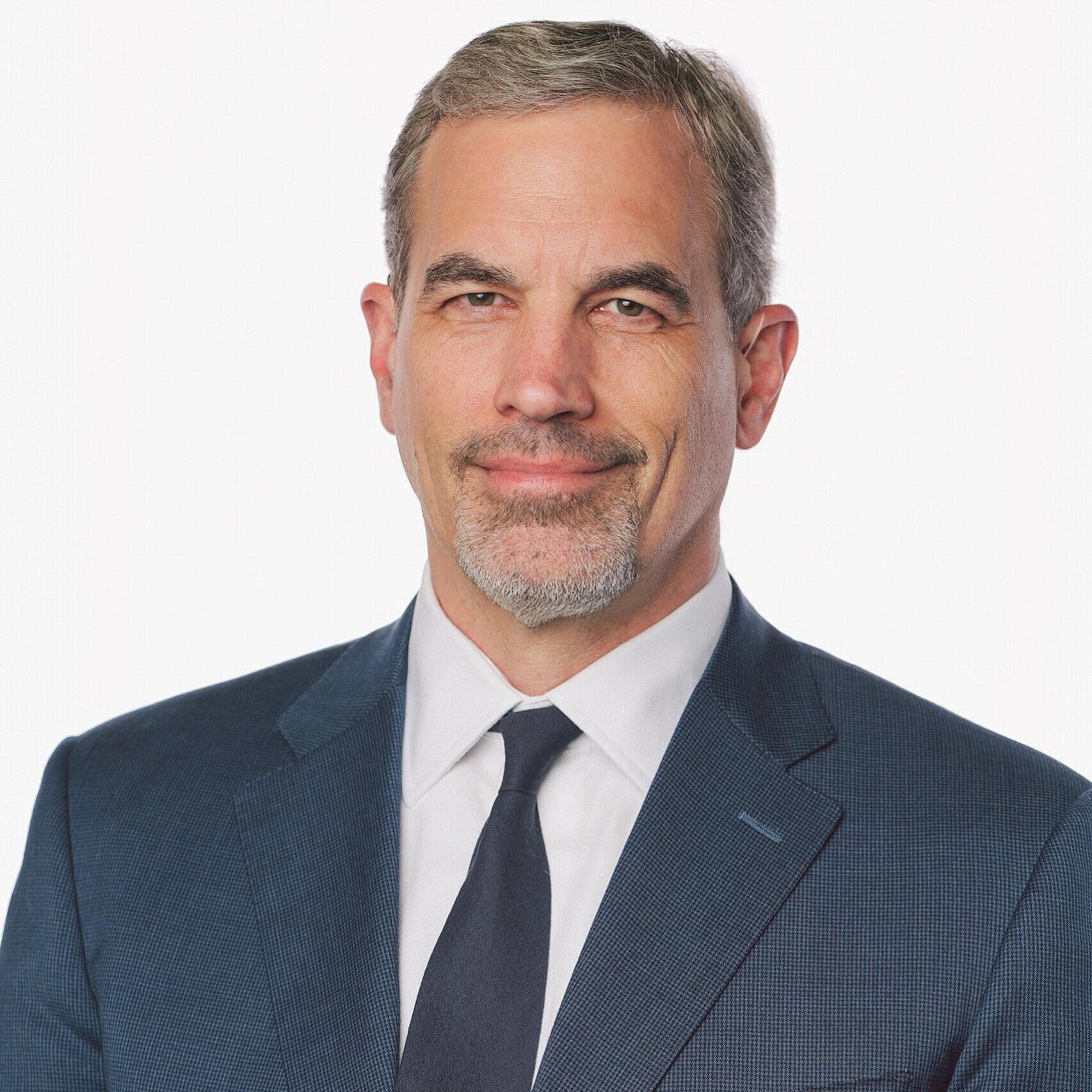


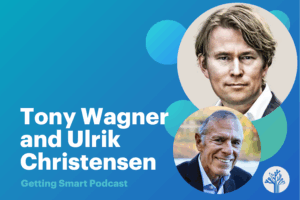
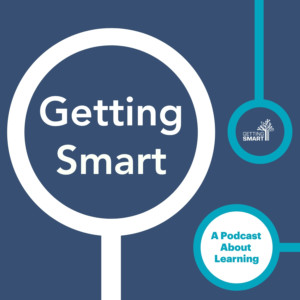



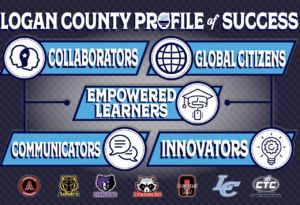
0 Comments
Leave a Comment
Your email address will not be published. All fields are required.